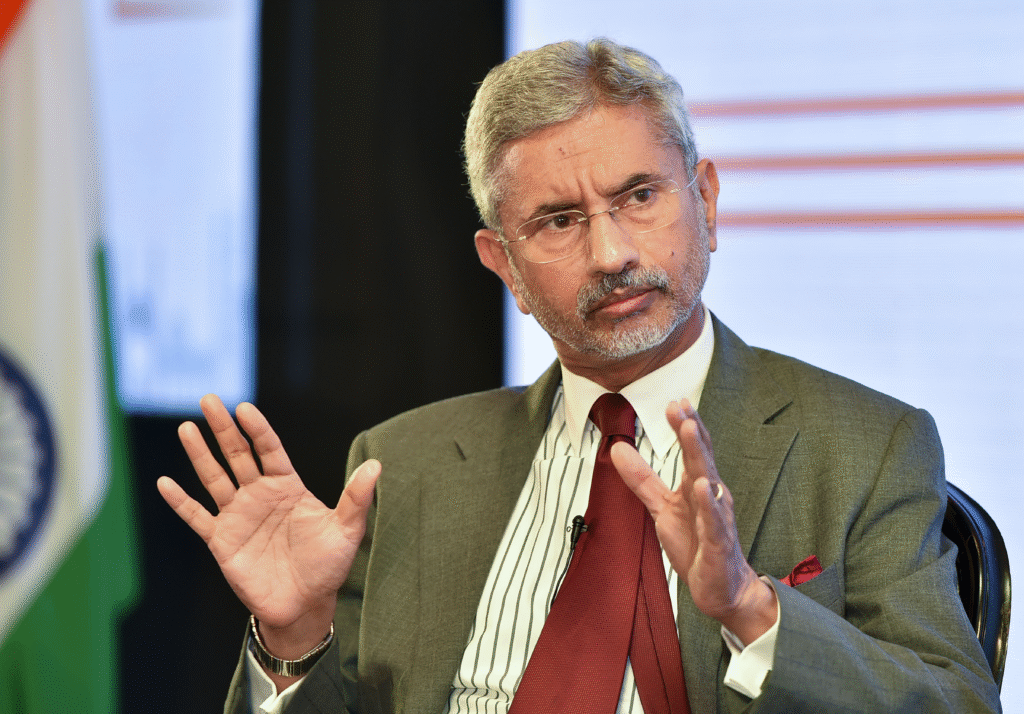“Bridging Tensions: Jaishankar Lays Out the U.S.-India-Pakistan Ceasefire Timeline”

Breaking Down Jaishankar’s Remarks on India-Pakistan Ceasefire and U.S. Diplomatic Engagement (July 2025)
In a significant diplomatic development, India’s External Affairs Minister S. Jaishankar recently provided a detailed account of the chronology behind the India-Pakistan ceasefire and his direct involvement in high-level discussions, including a series of phone calls with U.S. officials. Jaishankar’s comments, delivered with a sense of clarity and confidence, shed light on India’s diplomatic strategy as well as the international context surrounding one of the most volatile regions in the world.
The Ceasefire: A Long-Standing Tension
India and Pakistan have a deeply strained relationship, with historical and territorial disputes—most notably over the Kashmir region—continuing to fuel tensions. Despite occasional moments of cooperation, the two nations have had a fraught and often hostile relationship. Since 2003, a formal ceasefire has existed along the Line of Control (LoC), but violations from both sides have been frequent. In early 2021, both nations reaffirmed their commitment to this ceasefire agreement, which had a significant effect on the security situation in Kashmir and beyond.
However, the path to peace has never been straightforward. The ceasefire, while a positive gesture, was frequently tested by cross-border firing, insurgent activities, and allegations of proxy warfare. Jaishankar’s remarks suggest that much of the diplomatic heavy lifting behind the scenes has been done through careful negotiations, often involving international stakeholders.
The Role of the United States
The United States has long played an influential role in South Asian geopolitics, especially in moderating tensions between nuclear-armed neighbors like India and Pakistan. While India has historically been wary of foreign involvement in its bilateral matters, the U.S. has often positioned itself as a crucial intermediary in diffusing tensions.
Jaishankar revealed that a series of high-level phone calls with U.S. officials played an instrumental role in facilitating dialogue between the two nations. “I was in the room,” Jaishankar asserted, emphasizing his direct involvement in shaping the outcomes of these conversations. His statement not only highlighted India’s strategic positioning in dealing with external pressures but also underscored the importance of U.S. support in ensuring stability along the LoC.
One key point Jaishankar made was the U.S. commitment to preventing escalation and promoting regional stability. Washington’s role in supporting dialogue and advocating for peace in the region is increasingly viewed as pivotal. As tensions in the region have fluctuated, particularly with the rise of new geopolitical challenges, the U.S. has been a stabilizing force, urging both countries to prioritize peace over conflict.
The Chronology of Events
Jaishankar laid out a clear chronology of events that led to the latest ceasefire and the accompanying U.S. diplomatic engagement. According to him, after a series of skirmishes and growing concerns about the potential for all-out conflict, India took the initiative to reach out through diplomatic channels. These efforts were bolstered by consistent U.S. diplomatic intervention, which advocated for renewed dialogue between New Delhi and Islamabad.
Key phone calls between U.S. officials and both Indian and Pakistani leaders served as a pressure point for de-escalation. While the details of these conversations remain confidential, Jaishankar indicated that the diplomatic maneuvering involved some delicate balancing—ensuring that India’s security concerns were addressed while also maintaining diplomatic channels open with Pakistan.
The Bigger Picture
What Jaishankar’s remarks also illuminate is the broader context in which these diplomatic discussions are taking place. South Asia is witnessing significant geopolitical shifts, with the rise of China as a global player, and the growing influence of the United States in countering Chinese ambitions. These developments have added a layer of complexity to the India-Pakistan dynamic, as both countries must navigate not only bilateral tensions but also the evolving role of global powers in their region.
For India, the ceasefire is part of a larger strategy of maintaining stability and avoiding a direct military conflict, while ensuring that the situation in Kashmir remains under Indian control. For Pakistan, the ceasefire could be seen as a means of de-escalating tensions and averting further military engagements that might strain its economy and international standing.
Conclusion: A Step Toward Peace?
While it’s too early to declare this latest ceasefire as a definitive step toward lasting peace, Jaishankar’s statements highlight a significant moment of diplomacy. The role of the United States in this process cannot be understated, as its involvement has provided a crucial external push toward moderation.
For both India and Pakistan, the ultimate challenge will be moving beyond mere ceasefires to address the deeper issues at the heart of their conflict—particularly the Kashmir dispute, which remains a sensitive and volatile issue. The international community, including the U.S., will likely continue to play a pivotal role in this process, as regional peace remains a collective goal.
As Jaishankar put it, “I was in the room.” His leadership in these discussions, combined with the ongoing international diplomatic engagement, might just pave the way for a future where dialogue trumps conflict in one of the most volatile regions in the world.
